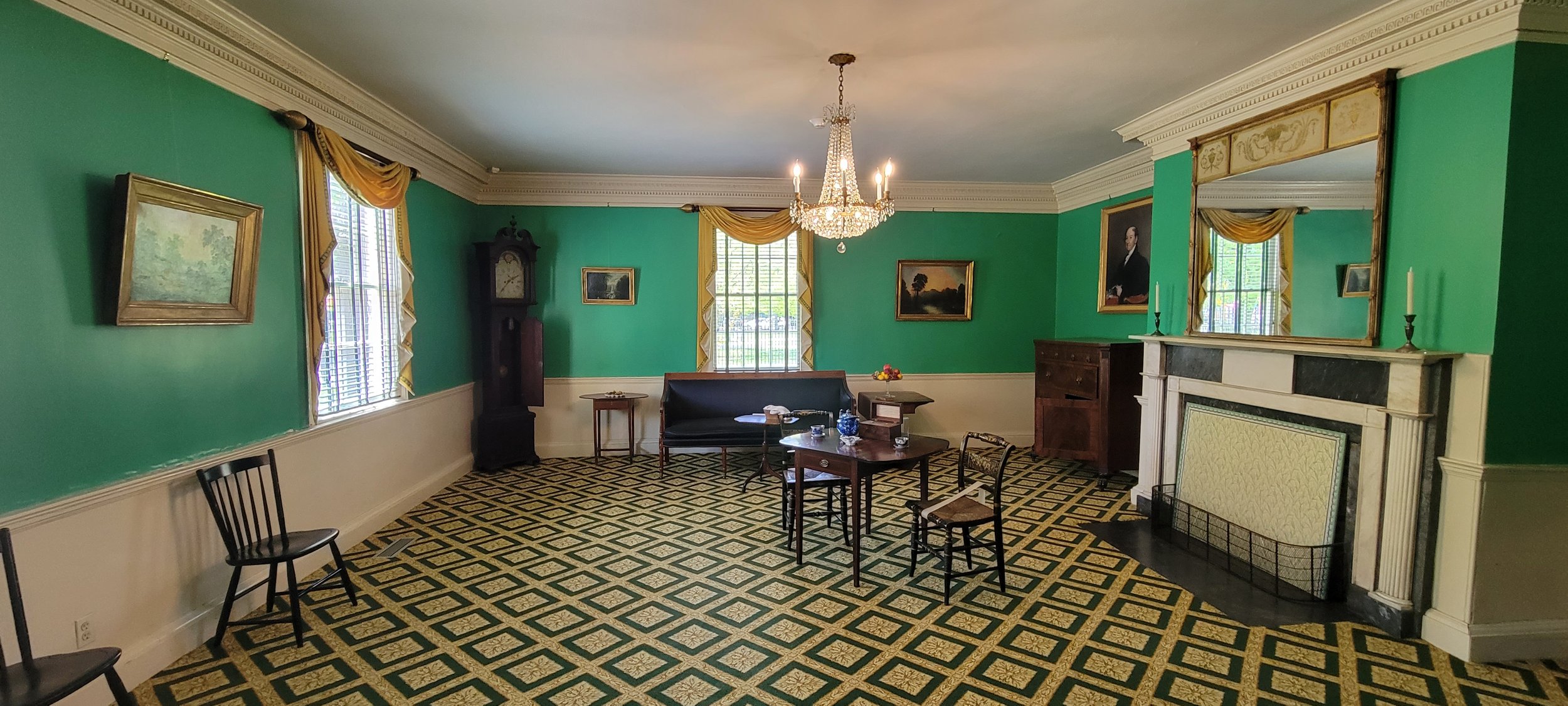The Manor
“It is about 12 miles from town at Jamaica, L.I. The house is not fashionable, but convenient, the outhouse good, and the grounds consisting of about 50 acres, sufficient to give me pasture for my Cows and hay for my Horses.”
— Rufus King, 1805
In 1803, Rufus King returned from England after having spent seven years as the US Ambassador there. While in England, he had spent time living in both the city and the country, and he desired similar accommodations upon his return to the United States. King eventually decided upon Jamaica as the location of his country estate.
When Rufus King took possession of King Manor in late November 1805, both the house and the landscape were unremarkable. However, under Rufus King’s ownership, King Manor would develop into a complex and intriguing landscape, expanding to 160 acres of bountiful farmland. King made two major additions to the house itself, enlarging it to its current size. In 1806, the first addition, a kitchen [today our North Kitchen], was constructed. This kitchen was built from King’s own lumber and finished with shingles purchased from a neighbor. By 1810, he had also enlarged the dining room and altered the bedrooms above. This represents the final major addition to the house.
Under King’s ownership, King Manor functioned as a working farm, serving as a laboratory for his agricultural experimentation and as a source of commercial profit. King wrote and received hundreds of letters discussing the state of his crops, his fields, and his agricultural methods. His account book records large numerous references to the sale of crops, including wheat, barley, potatoes, corn, strawberries, apples, peaches, and more. He employed farm workers throughout the year, and took a close interest in the everyday operation of King Manor. By the fall of 1807, King had hired a full-time gardener for the farm at Jamaica, and he had a fenced-in garden on his land. He also raised livestock, including dairy cows, horses, hogs, and sheep. While it appears that King was an agricultural innovator, experimenting with new farming methods and technologies, King Manor was in many respects a typical 19th-century Queens County farmstead.
After Rufus’ death in 1827, John A. King took possession of his father’s estate as a fully working farm, complete with laborers and, most likely, an established market. King Manor continued to operate as a working farm for some time, even as the increasingly-urbanized town of Jamaica began to close in around it. Like his father, John A. King studied agriculture as a science. He was the founder and president of the New York State Agricultural Society, and he used his political influence – in both the State Legislature and eventually as Governor of New York – to further the cause of New York State farmers.
It was under John A. King’s heirs that King Manor transformed from a working farm to a residential estate. When John A. King died in 1867, King Manor was left to his wife, Mary Ray King. She lived on the property until her death in 1870. The estate then passed to their daughter, Cornelia King, who lived there until her death in 1896. Soon after, the 11.5 acres of land now comprising King Park were purchased by the Village of Jamaica from the estate of John A. King.
(This is an edited excerpt from the King Park Cultural Landscape Inventory, prepared by John Evans in 2002.)





